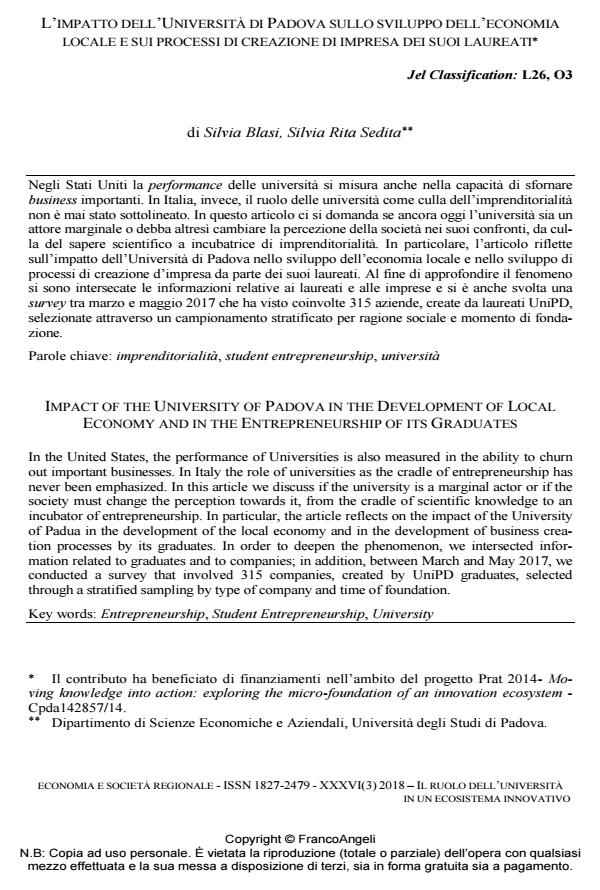Impact of the university of padova in the development of local economy and in the entrepreneurship of its graduates
Journal title ECONOMIA E SOCIETÀ REGIONALE
Author/s Silvia Blasi, Silvia Rita Sedita
Publishing Year 2018 Issue 2018/3
Language Italian Pages 14 P. 72-85 File size 501 KB
DOI 10.3280/ES2018-003007
DOI is like a bar code for intellectual property: to have more infomation
click here
Below, you can see the article first page
If you want to buy this article in PDF format, you can do it, following the instructions to buy download credits

FrancoAngeli is member of Publishers International Linking Association, Inc (PILA), a not-for-profit association which run the CrossRef service enabling links to and from online scholarly content.
In the United States, the performance of Universities is also measured in the ability to churn out important businesses. In Italy the role of universities as the cradle of entrepreneurship has never been emphasized. In this article we discuss if the university is a marginal actor or if the society must change the perception towards it, from the cradle of scientific knowledge to an incubator of entrepreneurship. In particular, the article reflects on the impact of the University of Padua in the development of the local economy and in the development of business creation processes by its graduates. In order to deepen the phenomenon, we intersected information related to graduates and to companies; in addition, between March and May 2017, we conducted a survey that involved 315 companies, created by UniPD graduates, selected through a stratified sampling by type of company and time of foundation.
Keywords: Entrepreneurship, Student Entrepreneurship, University
Jel codes: L26, O3
- Who benefits from university–industry collaboration for environmental sustainability? Eleonora Di Maria, Valentina De Marchi, Katharina Spraul, in International Journal of Sustainability in Higher Education /2019 pp.1022
DOI: 10.1108/IJSHE-10-2018-0172
Silvia Blasi, Silvia Rita Sedita, L’impatto dell’università di padova sullo sviluppo dell’economia locale e sui processi di creazione di impresa dei suoi laureati in "ECONOMIA E SOCIETÀ REGIONALE " 3/2018, pp 72-85, DOI: 10.3280/ES2018-003007